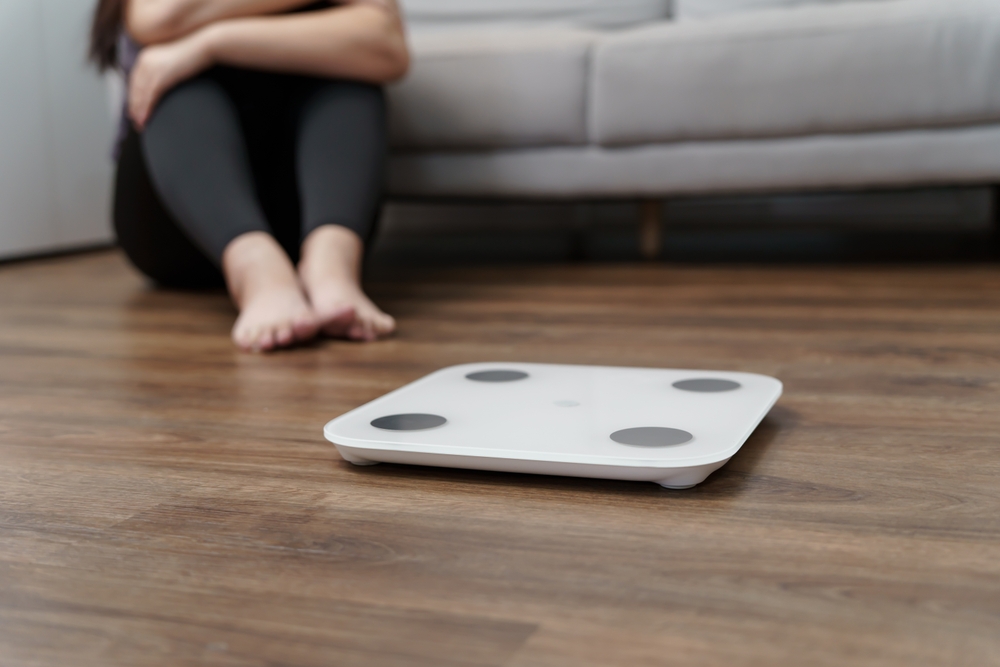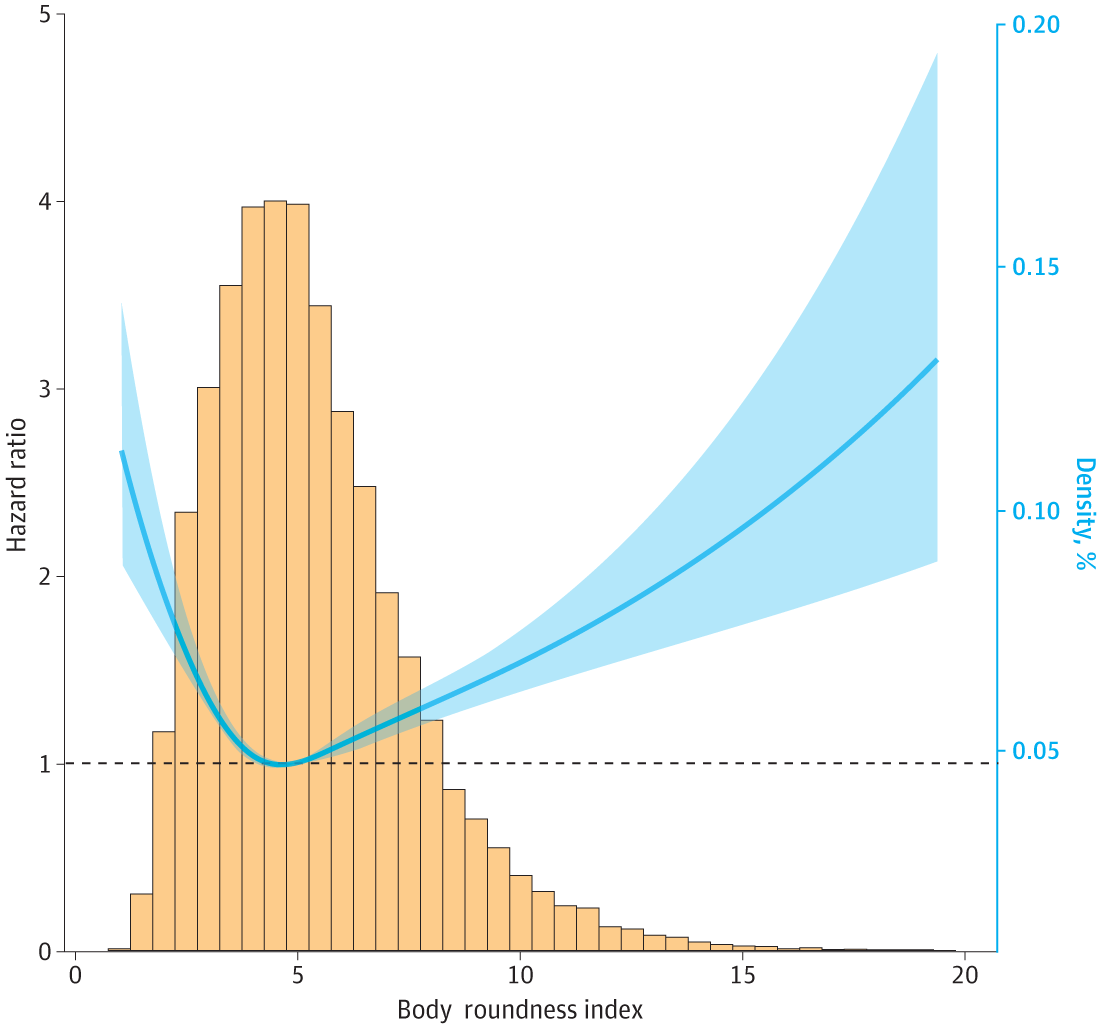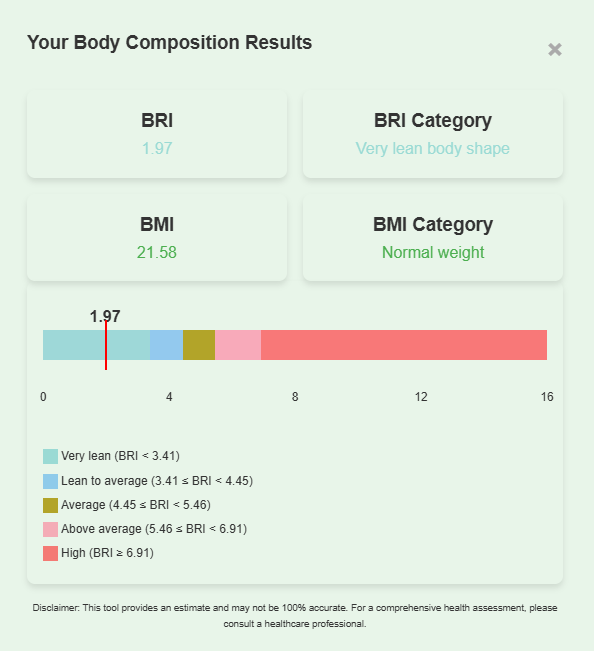There’s a new concept for calculating obesity called the Body Roundness Index (BRI), which may be a more accurate way to understand obesity and healthcare risk than the Body Mass Index (BMI). That’s because visceral obesity is an important risk factor associated with all-cause mortality. In the old days we talked about “pear shaped people” vs. “apple shaped people.” Having an “apple shape” – meaning, being “round”, is an indication of not only extra-abdominal fat, but having fat deposited around the internal body organs (viscera). We’ve known for years that BMI had serious limitations, particularly for muscular people. However, we’ve all been waiting for something better to take its place that does not involve purchasing expensive equipment.
A large retrospective study of 33,000 U.S. adults published in JAMA Network Open Trusted Source, found a “U-shaped” curve, indicating those with a BRI below and above the healthy range had an increased risk of death from any cause. The study also found that over the past 20 years, BRI has had an upward trend, another indicator of the USA’s obesity epidemic. BRI is almost as easy to perform as BMI but offers a more accurate assessment of body composition and health risks. You can read the full text of the article here: Body Roundness Index and All-Cause Mortality Among US Adults | Nutrition, Obesity, Exercise | JAMA Network Open | JAMA Network
In a nutshell: Among 32 995 US adults, mean BRI increased gradually from 4.80 to 5.62 between 1999 and 2018. This increasing trend was more obvious among women, elderly individuals, and individuals who identified as Mexican American. After a median follow-up of 9.98 years, there were 3452 deaths (10.46% of participants) from all causes. There was a U-shaped association between BRI and all-cause mortality, with the risk increased by 25% for adults with BRI <3.4 and by 49% for those with BRI of >6.9 or greater compared with the middle quintile of BRI (4.5 to 5.5 after full adjustment). These findings provide evidence for proposing BRI as a noninvasive screening tool for mortality risk estimation.
Here is the mathematical formula for those of you who can’t give up your slide rule:
However, for the rest of us, I found some free BRI calculators online (just like there are BMI calculators out there). I tried one of them out myself. My BMI says I am of normal weight (21.58) but because I am one of those “pear people,” the BRI considers me “very lean.” That could actually place me on the left side of that bell curve – see the JAMA figure I have provided below. (I am not worried, however, because I know I have plenty of stored energy for a rainy day in my caboose…
Another study out of Japan has shown an association between BRI and insulin sensitivity, and that is what I am worried about with regard to the BRI. Most of our patients with chronic wounds are obese and many are morbidly obese. Not all of them are yet classified as “diabetic,” but there’s increasing evidence that an elevation in hemoglobin A1C is one of the “late” changes. Indeed, neuropathy may happen before the formal diagnosis of diabetes. It seems that we should be getting interventions in place earlier, perhaps based on the tape measure rather than the scale.

Dr. Fife is a world renowned wound care physician dedicated to improving patient outcomes through quality driven care. Please visit my blog at CarolineFifeMD.com and my Youtube channel at https://www.youtube.com/c/carolinefifemd/videos
The opinions, comments, and content expressed or implied in my statements are solely my own and do not necessarily reflect the position or views of Intellicure or any of the boards on which I serve.





